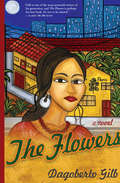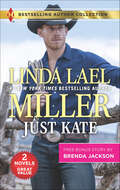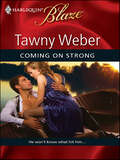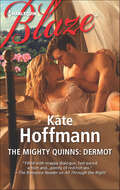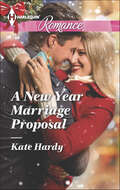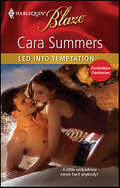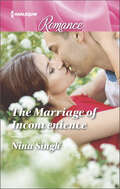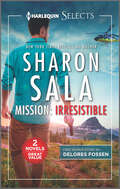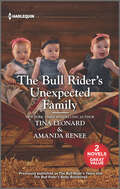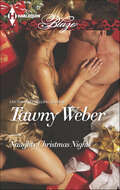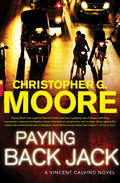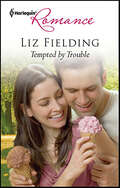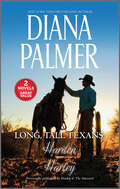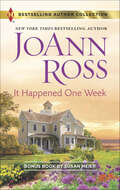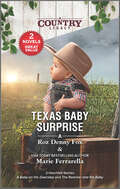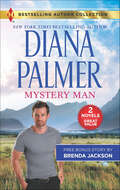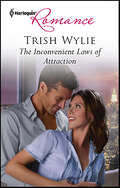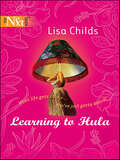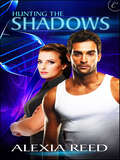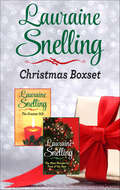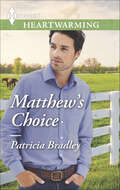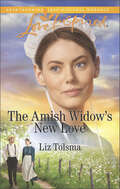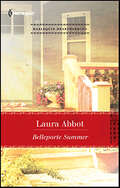- Table View
- List View
The Flowers: A Novel
by Dagoberto GilbDagoberto Gilb is &“one of the most powerful writers in his generation, and The Flowers is perhaps his best book . . . Not to be missed&” (Larry McMurtry). Sonny Bravo is a sensitive, unusually smart fifteen-year-old who lives with his vivacious mother. But when she marries an Okie building contractor, they are uprooted to a small apartment building in a city where prejudice is not just white against black, but also brown. As Sonny meets his new neighbors, he is inexorably ensnared in their lives: Cindy, a married, bored, drugged-up eighteen-year-old; Nica, a cloistered Mexican girl who cares for her infant brother despite never being allowed to leave her apartment: Pink, an albino black man who sells old cars in front of the building; and Bud, a muscle-bound construction worker who hates blacks and Mexicans, even while he&’s married to a Mexican-American woman. In arguably his most powerful work yet, Dagoberto Gilb has written &“a psychologically complex novel&” that transcends age, race, and time, displaying the fearlessness and wit that have helped make him one of America&’s most authentic and original voices (The Washington Post).
Just Kate: A 2-in-1 Collection
by Linda Lael MillerBESTSELLING AUTHOR COLLECTIONReader-favorite romances in collectible volumes from our bestselling authors.WILD IN THE OUTBACKAfter a devastating betrayal by her father and her fiancé, Kate Blake decides it’s time to live her life on her own terms. And that includes falling for the one man she’s always considered off-limits—Sean Harris, her late sister’s husband. Ever since her sister died, Kate’s parents have placed impossible expectations on her, but now Kate finally has a chance to find out who she really is.On impulse, Kate seeks out the rugged Australian in his homeland. With Sean, she is surprised to find a sense of home and belonging that she’s never known. But Sean has never gotten along with her family, and even on the other side of the world, Kate can’t escape them. Can she ever find a way to be free with the one person who loves her for nothing else except being…just Kate?FREE BONUS STORY INCLUDED IN THIS VOLUME!What a Westmoreland Wants by New York Times bestselling author Brenda JacksonAussie rancher Callum Austell doesn’t back down from a challenge. Gemma Westmoreland is on his turf now, but she’s no pushover. If Callum is going to get what he wants—as he always does—the millionaire just might have to utter three little words first. Previously published.
Coming On Strong
by Tawny WeberBy private invitation only...Event: Very sensual resort opening.Place: In bed, hopefully!Host: Hottie millionaire Mitch Carter.Planner: Belle Forsham. Who once jilted Mitch at the altar. Oops...When Mitch's new hotel falters, he needs a pro. Enter the It Girl of event planning: the traitorous, damnably sexy Belle. Time for some red-hot revenge!But Belle has her own secret agenda for her ex-fiancé. And in the meantime, she'll enjoy how Mitch still makes her legs-and every other body part-deliciously quiver.But it's strictly business between them this time. At least it is...until Belle decides that the best sexual revenge goes both ways!
The Mighty Quinns: Dermot (The Mighty Quinns)
by Kate HoffmannSalesman Dermot Quinn plays the smooth charmer to perfection. But when his grandfather issues a challenge to his grandsons-start a new life with next to nothing-Dermot finds himself on the doorstep of a Wisconsin farm. And now he's face-to-face with a woman who makes him lose every bit of his cool!Farm owner Rachel Howe once had her own dreams. Now she's faced with ruin and losing the family business. On the surface, Dermot looks like he could be the answer to her problems, not to mention her empty bed and lonely nights.But six weeks doesn't seem so long when you find the love of your life....
A New Year Marriage Proposal
by Kate HardyWill Christmas work its magic? When reclusive Quinn O'Neill's new neighbor Carissa Wylde asks for his help with a Christmas charity project, he can't resist her vivacious energy. And soon he's caught up in the work...and the beautiful, fun-loving woman behind it! Like Quinn, Carissa carries hurt and pain beneath her smiles and holiday cheer. On an ice rink, surrounded by twinkling lights, he'll start to kiss it all better. There's plenty of festive magic...but now he's got the toughest challenge of all: proving this romance is not just for Christmas but for a lifetime....
Led into Temptation (Forbidden Fantasies)
by Cara SummersHe's the worst possible man for her. And she wants him with a desperation that borders on obsession…Recently jilted Naomi Brightman has had it with men! Her last boyfriend left her with a broken heart and the FBI on her trail. What she needs now is a place to hide for a while. Only when she gets to the remote resort she owns with her sisters, what she finds is a temptation that could jeopardize a lot more than her good name….Enter dangerously delicious Dane MacFarland. He makes Naomi sizzle all over! But…he's off-limits. Really, really off-limits. Still, the passion between them is overwhelming, irresistible—even downright sinful. Or it would be—if Dane was half the man Naomi thinks he is….
The Marriage of Inconvenience
by Nina SinghHer lawfully wedded husband…again? When Angeline Scott&’s business is in trouble, she turns to the one man who can help—RJ Davet. She needs him to pose as her husband to secure a vital deal. Surely that shouldn&’t be too difficult, seeing as RJ played that role spectacularly well until their marriage fell apart! Opening the door to RJ again makes Angel realize something immediately: she s never gotten over him. But can she convince him of that before this deal is struck and he walks out of her life once more?
Mission: Irresistible (A\year Of Loving Dangerously Ser. #1)
by Sharon SalaA dangerous alliance Mission: Irresistible by New York Times Bestselling Author Sharon Sala Agent Alicia Corbin has her toughest assignment yet: persuade SPEAR operative East Kirby to return to the field as her partner in order to help catch a traitor. Getting emotionally involved with the sexy loner was not part of her plan—until East invaded her heart! Now Alicia is determined to make her mission a success…and East a partner for life. FREE BONUS STORY INCLUDED IN THIS VOLUME! Kade by USA TODAY Bestselling Author Delores Fossen For three months, Kade Ryland had posed as Bree Winston's husband while the two FBI agents investigated adoptions and surrogates at the Fulbright Fertility Clinic. Nine months later, a baby—his baby—was dropped at his feet, and Bree disappeared. Now Kade had more than one reason to find Bree and close this case once and for all.New York Times Bestselling Author Sharon Sala
The Bull Rider's Unexpected Family
by Tina Leonard Amanda ReneeA cowboy’s change of plansThe Bull Rider’s Twins by Tina LeonardAll Darla Cameron wanted was one passionate night with gorgeous Judah Callahan. But now that she’s pregnant with twins, she has to be practical. And Judah isn’t the marrying kind! But since learning the woman he’s loved from afar is having his babies, the carefree bachelor has had a change of heart. And now all he can think about is getting Darla down that aisle…with him.The Bull Rider’s Baby Bombshell by Amanda ReneeWhen Jade Scott’s sister disappears, leaving Jade to care for her infant triplet daughters, she needs help. Specifically from bull rider Wes Slade, the sexy and not-so-anonymous sperm donor. As the egg donor, Jade won’t abandon her children. Their children. Wes was never supposed to be part of this family. But as Jade and Wes look after the triplets, the two discover they have more in common than they ever expected…New York Times Bestselling Author Tina LeonardPreviously published as The Bull Rider’s Twins and The Bull Rider’s Baby Bombshell
Naughty Christmas Nights
by Tawny WeberThis Christmas, it's nice vs. naughty... Lace stockings... Hailey North has worked her butt off to make Merry Widow Lingerie a success. But if she doesn't win the bid for Rudolph's department store, she's in big trouble. Her strategy? To prove that romance, playfulness and eroticism are what women want. The problem, however, is what Hailey wants...her wickedly hot, sexy competitor. Or black leather? Sex sells, and the Milano line is certainly all about sex. Besides, winning is the only way Gage Milano can extract himself from the family business. Unfortunately, Hailey's romantic lingerie threatens not only his freedom, but his libido! But when their professional rivalry turns into a red-hot rendezvous, the competition really starts heating up. And Xmas is about to get a whole lot more X-rated!
The Mighty Quinns: Rogan (The Mighty Quinns)
by Kate HoffmannPutting the wild into wilderness... New Zealand adventure guide Rogan Quinn doesn't deny he's a commitment-phobe. He learned long ago that there is nothing more dangerous than love. But that doesn't mean he won't indulge in pleasure where he finds it, and his newest client looks like she's badly in need of a lot of pleasure. Psychologist Claudia Mathison has brought five of her phobia-suffering patients into the wilderness hoping for a breakthrough, not to mention a break in her career. Instead, Rogan invites her on an adventure-and she has no doubt that the sexy Kiwi can take her higher and further than she's ever been. But Claudia has a fear of her own...that if she takes that adventure with him, she won't be able to find her way back. Or worse, she won't want to.
Paying Back Jack (The Vincent Calvino Novels #10)
by Christopher G. Moore&“A gripping tale of human trafficking, mercenaries, [and] international conspiracies . . . set against the lovely and sordid backstreets of Bangkok.&” —Barry Eisler Paying Back Jack is a gritty crime thriller in the Shamus Award–winning series featuring Vincent Calvino, a disbarred American lawyer working as a PI in the dangerous and steamy Thailand capital. Calvino has agreed to follow the &“minor wife&” of a Thai politician and report on her movements. His client is Rick Casey, a shady American whose life has been darkened by the unsolved murder of his idealistic son. But what seems to be a simple surveillance job pulls Calvino into a quest for revenge, as well as a perilous web of political allegiance. Calvino narrowly escapes an attempt on his life and then avoids being framed for a murder only through the calculated lever-pulling of his best friend, Thai police colonel, Pratt. But unknown to our man in Bangkok, in an anonymous apartment tower in the center of the city, a two-man sniper team awaits its shot, a shot that will change everything . . . &“A terrific character . . . A terrific writer.&” —T. Jefferson Parker
Tempted by Trouble
by Liz FieldingElle Amery has grown up a fighter-her late mother's bad-boy-loving reputation was not the best inheritance....So when smooth-talking Sean McElroy turns up with a pink-and-white ice cream van called Rosie that's apparently hers, Elle tries to ignore the traitorous flicker of attraction!Family-oriented Elle is the last girl Sean should want, but as they embark on a journey filled with unexpected twists, these two misfits may discover they are the perfect fit for each other!
Long, Tall Texans: Harden & Harley (Long, Tall Texans)
by Diana PalmerEnjoy two classic Lone Star romances from New York Times bestselling author Diana Palmer!HardenRancher Harden Tremayne was the toughest, loneliest man to come out of Texas. Until he met Miranda Warren…The lovely widow had an overwhelming passion for the long, lean cowboy. But after she discovered the tragic secret he harbored deep in his soul, would her love be enough to melt his heart?HarleyAlice Jones has been called to Jacobsville, Texas, after a man’s body is discovered. And her investigation leads her straight back to rancher Harley Fowler. But when the friendly cowboy’s smile starts to distract her from her work, there’s only one thing to do—convince him to marry her.
It Happened One Week
by JoAnn RossSOME PLACES YOU NEVER FORGET... For Amanda Stockenberg, that place was Smugglers' Inn. The seaside inn had been a refuge for Amanda when she was sixteen, a place to find solace, to find herself...and to find love. She can't think of the inn now without remembering Dane Cutter. The then nineteen-year-old illegitimate son of the cook had taught her about love. She'd been ready to give up everything to be with him. But at the end of the summer he, it seemed, was not. Now, ten years later, Amanda once again finds herself staying at Smugglers' Inn, this time for a corporate retreat. The event is her last chance to prove herself to her bosses, so she doesn't need any complications...like finding Dane Cutter still working at the inn. And still as dangerous to her equilibrium as ever. Because suddenly, Amanda isn't sure what she wants-the window office or the window room of a seaside inn. She has one week. Seven days to choose between achieving all her dreams...or reuniting with the man she never stopped loving.
Long, Tall Texans: Long, Tall Texans: Leo Long, Tall Texans: Jordan Long, Tall Texans: Cash Grier Long, Tall Texans: J. B. (Long, Tall Texans)
by Diana PalmerTwo classic romances in the Long, Tall Texans series from New York Times–bestselling author Diana Palmer, featuring alpha cowboys who fall hard in love.LeoThe citizens of Jacobsville whisper about pretty Janie Brewster and her hopeless crush on handsome Leo Hart. With her latest transformation—into a courageous cowgirl—Janie dazzles her cowboy crush. This time, the townspeople notice hot-blooded hunger gleaming in Leo’s eyes when he gazes at Janie. Is the last Hart bachelor on the verge of taking a bride at long last?JordanStrong seductive and set in his ways, Jordan Powell clashes with his innocent, yet beautiful, neighbor Libby Collins. When Jordan makes it his personal crusade to help Libby hold on to her beloved homestead, it’s just a matter of time before sparks fly. But a cattleman’s pride is a force to be reckoned with. Can Libby accomplish what no woman has before and lasso Jordan’s heart—forever?
Texas Baby Surprise
by Marie Ferrarella Roz Denny FoxBabies change all the rules!A Baby on His Doorstep by Roz Denny Fox When Rio McNabb's bronc-riding career is sidelined by an injury, the only upside is his gorgeous live-in nurse, Binney Taylor. Just one hitch—Binney used to have a crush on his identical twin brother. Rio's sure that he can earn her affection, but his confidence is rocked when a stranger shows up with an infant boy claiming that Rio is the father…The Rancher and the Baby by Marie Ferrarella Rancher Will Laredo has a hard time holstering his temper around Cassidy McCullough. When they rescue a baby during a flash flood, however, Will and Cassidy suddenly find themselves temporary guardians of a child—together. The only way to make it through is to declare a cease-fire. And Lord help them both if that happens…because then Will might just discover he&’s falling for his enemy.USA TODAY Bestselling Author Marie Ferrarella2 Heartfelt StoriesA Baby on His Doorstep and The Rancher and the Baby
Mystery Man
by Diana PalmerBESTSELLING AUTHOR COLLECTIONReader-favorite romances in collectible volumes from our bestselling authors.A HIDDEN DANGERTycoon Canton Rourke has fallen on hard times. When he planned a vacation with his daughter to escape the pressure of rebuilding his company, he didn’t think he would find himself in another hotbed of trouble. Yet Canton is now beset and besieged—and all because of his neighbor, Janine Curtis. The woman is out to get him. He’s sure of it. He came to Mexico to relax, not catch bandits and track kidnappers!As a famous thriller writer, Janine traveled to Mexico to get inspiration—and keep an eye on her parents while they work at a new archeological dig. Janine could care less what the brash single father thinks of her. However, it’s hard to ignore how her knees buckle every time he rescues her. She’s falling for this man who is shrouded in mystery, but is it worth the risk?FREE BONUS STORY INCLUDED IN THIS VOLUME!Cole’s Red-Hot Pursuit by New York Times bestselling author Brenda JacksonFormer Texas Ranger Cole Westmoreland always gets what he wants. But the subject of his desire, Patrina Forman, is dead set against falling for a man with a no-strings attitude—until a Montana blizzard changes everything!Previously Published.
The Inconvenient Laws of Attraction
by Trish WylieLawyer Olivia Brannigan has faced down some cool customers, but client Blake Clayton takes emotional control to a whole new level. The man didn't even bat an eyelid when he inherited a fortune from his estranged father!Blake doesn't want guilt money-the only thing piquing his interest is the tough-talking, sweet-looking lawyer that comes with his new property portfolio.Dating on the job isn't in Olivia's Guide to Good Client-Lawyer Relationships, and it certainly doesn't sit easily with her "no strings" attitude...but aren't rules always made to be broken?
Learning to Hula
by Lisa ChildsBeing Strong Is a State of Mind...Everyone in town thinks Holly DeJong has handled her husband’s death well, including her. Until the day she spots a cupcake display at Smiley’s General Store and lets loose. Holly’s husband is dead...because he cheated on her. He didn’t have just one Kitty Cupcake on the side; he had boxes of them!Now everyone in town thinks she’s lost it, except Holly. For the first time in months she feels as if she can handle anything, including her children, dating-minded family members and a certain deputy with more on his mind than the cupcake massacre. Just like the hula dancer on her husband’s favorite lamp, Holly is learning that happiness comes from swaying with whatever possibilities life throws her way.
Hunting the Shadows
by Alexia ReedAmy has spent her life in isolation. Locked away in the Centre, a secret government facility where children with extraordinary abilities are raised as highly skilled fighters, she longs for a normal life. A life where being around people doesn't overload her sensitive telepathic mind. A life where she can't see through the eyes of a murderer as he hunts down his next victim...J.C. Nikolaiev was a top researcher, but when his conscience got the better of him, he tried to destroy his work and free his subjects-and was imprisoned as a traitor. To save himself and prevent more people from dying, J.C. must catch the serial killer stalking the halls of the facility. But his only leads come from a woman whose thoughts have invaded his mind...Finally out of the psych ward, Amy joins forces with J.C. to find the killer before he closes in on them. Can their growing attraction withstand the truths they uncover?80,000 words
Lauraine Snelling Christmas Boxset: The Greatest Gift and The Most Wonderful Time of the Year
by Lauraine SnellingTwo festive holiday novellas from award-winning author Lauraine SnellingThe Finest Gift A plain Jane without any suitors, Arley Hoople doesn't dare dream of romance this Christmas. So she brings holiday joy to others: repairing her grandmother's nutcracker and commissioning a dollhouse for the girls at the orphanage. Yet one knock at the wood-carver's door unexpectedly brings Arley a gift of her own: love.The Most Wonderful Time of the Year Romance blooms between Blythe Stensrude and Thane Davidson after their dogs tangle leashes in the park—until Thane becomes guardian to his three-year-old niece. Blythe doesn't think she's mother material, but how can she refuse Thane's request to give a neglected little girl the best Christmas ever?
Matthew's Choice
by Patricia BradleyHe left it all behind. Until now. It's New Year's Eve, and for Matt Jefferies, life is perfect. The penthouse, the career-even the perfect soon-to-be-fiancée. But then Matt's troubled past knocks on his door. And once Allie Carson says hello, everything changes. Allie broke up with Matt years ago, when he turned "that kid from Beaker Street" into a cold, corporate city slicker. It went against what she loved about him-and the small-town life she could never leave. Now, with Matt's estranged family facing desperate times, it's time for him to come home. And to choose between the man Matt's become...and the woman who never stopped loving him.
The Amish Widow's New Love
by Liz TolsmaHe’s her first love…Will he be her last?Naomi Miller can’t believe Elam Yoder’s back in their community after all the pain he caused! Still, the young Amish widow must reunite with her disgraced first love to raise money for her infant son’s surgery. Elam’s remorse seems sincere, as does his commitment to helping Naomi and her baby. Elam’s looking for forgiveness—and a new life with Naomi and her bobbeli by his side.
Belleporte Summer
by Laura AbbotThe first time Laurel Eden sees Belleporte, she realizes it's the perfect place to live. The dreams she's always had can finally come true. Little does she know that this simple decision is going to change everything-for her and for those she loves....The first time Ben Nolan meets Laurel, he realizes she's like no one else he's ever met. If his situation were different, he'd try to get to know her better, but a relationship with Laurel is out of the question. Especially after he uncovers the secret in her past.
